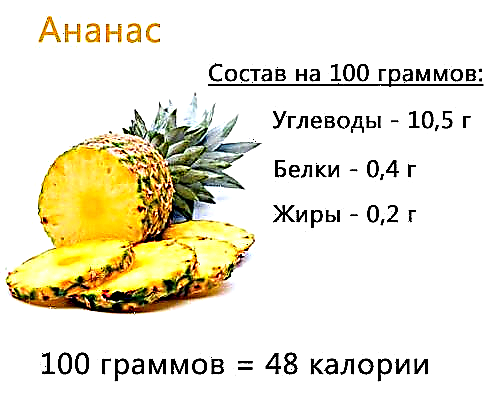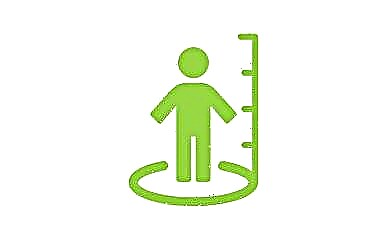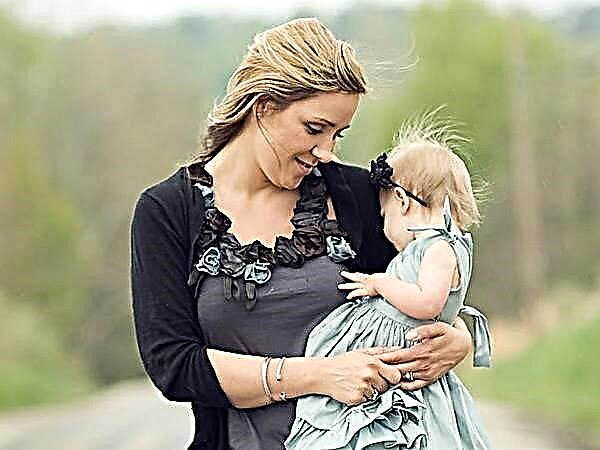Any young family where a child is growing up is faced with a request from the kid to buy an animal. Some parents respond with a flat refusal. Others - mindlessly agree immediately. Both are not entirely correct. I propose to talk about the influence of animals on raising a child in a family in more detail.

Allow, cannot be denied
- The appearance of a pet in a family is a long-awaited event for a child. He already loves his dog, cat or bird. From the first days, you need to teach the baby to take care of them, take care of them as much as possible, not offend. This will help to develop in the little person the qualities of a big and kind heart, - kindness, responsibility.
- Animals bring a lot of positive emotions to the family. Observing the behavior of a pet, its games, rest sets up both adults and kids to be positive, has a beneficial effect on the nervous system. A child from communication with animals becomes gentle, calm, balanced.
- Sometimes, in the heat of play, a child can offend a cat or dog. And no matter how patient the pet is, scratches from a cat or growl from a dog cannot be avoided. This situation teaches your little one great caution, makes you think about the feelings of others. Perhaps the child will realize for the first time that it was he who offended another creature.
- A baby at 2 - 3 years old begins to feel a lack of communication. The constant presence of parents does not count. Mom and Dad are adults. The conversation is about a friend with whom you can communicate on an equal footing. Only in this way the baby learns the world faster. It is the animal that becomes real for the little person friend.
- Communication with smaller brothers helps the child in the development of speech. Reproducing for his "Friend" sounds of meowing or growling, the whistling of a bird or the squeak of a hamster, the baby begins to speak faster, and complex letters are easier for him.
- Played, now you need to clean up after yourself and your friend. It teaches the child to work and discipline... Here it is important not to overstrain the baby, let him do only feasible work, for example, collect and throw torn pieces of paper into the trash bin, fold toys. He is not ready for more. Otherwise, interest will simply disappear. Children do not like it when something goes wrong or takes a long time. Mom will have to sweep the floor, wipe up the spilled juice.
- Egoism, egocentrism is inherent in the child. It can be very difficult to get rid of this, especially if there is only one baby in the family. A dog or a kitten will be an excellent way out of the situation. Now the attention of parents will not be focused only on their offspring, and the baby cannot help but share a tidbit with a fluffy friend.
- Communication with a pet develops logical thinking in a child. He begins to understand: if the dog barks and runs to the bowl, then it wants to eat. Whining near the door - a walk is necessary.
- The first experiences and joys from communicating with a living being will help a person learn to empathize in the future., to experience positive emotions not only from their own achievements, but also from the successes of other people.
- Through the senses, the baby recognizes objects, their color and shape. He quickly learns to distinguish his ginger kitten from his neighbor's white cat. Stroking Tuzik's back, scratching behind Barsik's ear, imperceptibly quickly develops sensorics at the baby.
- Running and playing with the dog, walking it, the child becomes physically stronger, coordination of movements develops, the ability to work in a team appears, the qualities of a social individual are manifested... It is easier for such a child to get used to kindergarten, to school, and in adult life to the work collective.
- A puppy growing up next to a child becomes not only the most devoted friend, but also a patient listener, "Keeper of children's secrets :)".
You can't allow, refuse
There are situations when there is no way to take or buy a pet in the family:
- rental apartment;
- an allergy to wool in a child or someone from a family member;
- lack of time for parents, workload.

- Does a young family live in a small or rented apartment? You can buy not a big dog, but a tiny one hamster or guinea pig... The kid will watch with laughter as the hamster puts all the food in his cheeks. At this point, it will be appropriate to remind the child that the person should not do this. Small pets allow the child to feel big and kind, a real protector. He will not be able to experience such a feeling by being around only adults or with a large dog.
- Are you allergic to wool? Then it's best to buy the kid fish... These pets will not take much time, and you do not need to walk them, and they do not eat much. The only negative is that the baby will not be as interested with them as with those who can be touched and cuddled, with whom you can run and play with.
- Birds such as canaries and parrots, too much space will not take up. They are beautiful, they sing wonderfully. Babies develop an aesthetic taste from communication with birds, a craving for beauty. One warning: very rare, but allergic to feathers and droppings.
- It is not necessary to buy a thoroughbred Rex or a Siamese Bella for your child. Outbred animals, not so refined and spoiled, combine all the best qualities: responsiveness, kindness, devotion, gratitude. They do not demand anything, they just love with all their soul. The kid grows up next to them loyal, sympathetic, capable of gratitude, able to love.
- Take up little space rodents, so everyone can afford to buy them for their apartment. Hamsters are more aesthetic pleasure. It is impossible to take your eyes off the fluffy lump, cheerfully running around the room and pushing food by the cheeks. Rabbits, guinea pigs, chinchillas are also unlikely to become soulmates for a child. But rats are distinguished by their attachment to humans. They become real friends. Sometimes rats, sitting on a child's shoulder, make excursions to the street, of course, if the mother permits. And they don't run away anywhere.
Warn, foresee
It's about security. Young parents need to know that when buying a pet, another full member comes into the family. This is not a toy. Not a momentary whim for a child. You become responsible for one more life.

- It is unacceptable to take a puppy or kitten, and then just give it to friends due to a decrease in the baby's interest in them. By doing so, you are not only cruel, but also programming your child's behavioral matrix. If cruelty is the norm for parents, then what can you expect from your child in the future?
- Choosing a pet for a family is a serious matter. Who should I give preference to: a puppy or a kitten, a bird or a fish, a guinea pig or a hamster? A matter of taste, but not only;
- It is dangerous to bring a fighting dog into the house. Playing with children is absolutely not in the nature of these dogs. It is necessary to learn more about the characteristics of dog breeds, about their behavioral characteristics in advance.
- When buying an animal, ask to show you a certificate from a veterinarian. This is not just a stamped piece of paper, but the safety of your family. Often a dog or a cat is taken from the hands, not interested in the health of the animal, including mental. Who will guarantee that the cat or dog will not attack the child? Remember that vaccinations are not a whim of doctors. Together with a sick animal, an infection or illness may enter your house;
- Exotic animals occupy a special place. They can only be purchased at the pet store. Do not buy under any circumstances canaries and parrots in questionable poultry markets, according to advertisements. Very often they are brought illegally, and in most cases birds are carriers of rare diseases;
- Mom must patiently explain to her childthat he is big, and the bird or hamster is small, they cannot be hugged "very very", as dad, otherwise you can accidentally strangle. Behavioral taboos are being established.
- It is necessary to constantly monitor the health of the animal. Infection of a dog or cat with fleas and worms is unacceptable. This is very dangerous for the child, he can become infected and become seriously ill.
We buy for a child
- dog
There is hardly a more devoted friend. He will become both a protector and a playmate for the kid. The only thing adults should think about is the size of the future family member. It will be difficult for representatives of large breeds of dogs in a small apartment. And the child loves everyone - small, huge, short and very tiny.
Funny kids and animals, chatting kids with dogs!
- cat
The second popular pet is the feline. Although these fluffy lumps “walk on their own”, they really like to put their back under a gentle human hand. They get along well with children, very patiently endure tugging at the antennae and tail, and purr sweetly. Perfect for any apartment.
You will see amazing cats with our cute creatures - children. All this makes you smile. I wish you a good mood and pleasant viewing:
- rodent
In this category, there is a large selection: mice and rats, rabbits and guinea pigs, hamsters and chinchillas. These are very mobile animals, cheerful and constantly scurrying around the apartment. It's interesting to watch them. Rats are very distrustful, but if they feel love and affection, they become one of the most loyal. They can sit for hours on the shoulder or in the bosom of their beloved owner. Rodents will be interesting for older children from about 8 years old.
- bird
The most common at home are canaries and parrots. These are funny, beautiful birds with colorful plumage. Singing canaries creates a festive atmosphere, develops the child's aesthetic taste. They get along well with a person. Parrot babies are especially fond of, from small wavy ones to macaws. Delight in the whole family and the first word spoken by the favorite. There is interest in teaching the parrot to talk, to sit on the arm. For kids, buying a bird is not worth it, it is better to buy it for a child of 6 - 8 years old, at a conscious age.
- fish
These pets have, rather, a psychological effect. Suitable for hyperactive teenagers. They help to imbue with calmness, contemplation, tune in to a pacifying mood. You can watch the fish for hours. But you can't play with them, you can't cuddle them.
- turtle
Quite an interesting option for any child age, starting from 3 years old. The turtle is leisurely, but purposeful. It is interesting to feed her, you can come up with games with her, she needs to be walked. The kid will easily look after her for a walk in the yard.
Who is responsible
While the child is small, the responsibility for the care, feeding, health of the animal will fall on the shoulders of the parents. And if you take into account the employment of the dad at work, then in the end everything will go to mom.

With the correct upbringing of the child, the mother can gradually share the responsibility with the baby:
- 2 - 3 years old the child is able to ensure that the pet always has water in the bowl. The area of responsibility should expand every year;
- At 5 years old the baby can already at a certain time pour food for a dog or cat, fish or parrot. Ask your child to wash the drinker or brush the dog's coat;
- 7-8 years old the child can already completely replace the mother and take responsibility for the pet on himself. At this age, it is useful to read with him and discuss special literature, watch popular science films about animals.
Old-time animals
A young family already has a dog or a cat, birds or hamsters. How to bring your first child into the animal's habitual habitat? How to properly present them to each other? Will your pet be jealous of your baby or her husband?
[sc: rsa]
- As a responsible parent, the first thing you should do is take your four-legged and feathered friends to the vet. Vaccination, getting rid of parasites, checking for fleas - you must be sure of the health of the animal before you bring your first child from the hospital;
- Animals divide us into friends and foes with the help of the sense of smell, by smell. It is recommended to bring some of the baby's clothes from the hospital in advance. This will help to avoid stress in the pet when a stranger appears;
- During the first year of a baby's life, it is necessary to protect the access of animals to the baby's room: do not leave the door open, calmly drive the pet out of the nursery. The child still does not understand anything, but the four-legged are very curious. The smell of milk will attract both a dog and a cat. They can accidentally scratch or lick the baby. And we don't need bacteria or germs. Sometimes on the Internet you can see photos where Ryzhik or Barsik settled on the pillow of a sleeping baby. This is the complete irresponsibility of young parents;
- When the child begins to crawl, you must carefully monitor that he does not come into contact with the bowl or tray of the animal, no matter how clean you wash them. It is very important to develop the correct attitude of the child to the animal from a very early age.
By the time the child and pet live together, it becomes natural to live together. You already know what to expect from a dog or cat in relation to a baby. And the child's habits of pulling their antennae and picking their eyes are known to everyone, including four-legged ones.
You have weighed all the arguments, thought over your capabilities, tested your strength and decided to buy a four-legged friend or a feathered friend for the baby. And this is the right choice! Pets and children become true friends, selfless and honest.
Running around and bustle, scattered toys and torn pieces of paper - it doesn't matter, it's just real life. Over time, you will understand that communication with animals is necessary not only for the child, but also for you.
Your home will be cozy and warm, happiness will settle in it.
Funny and cute pets 🙂



